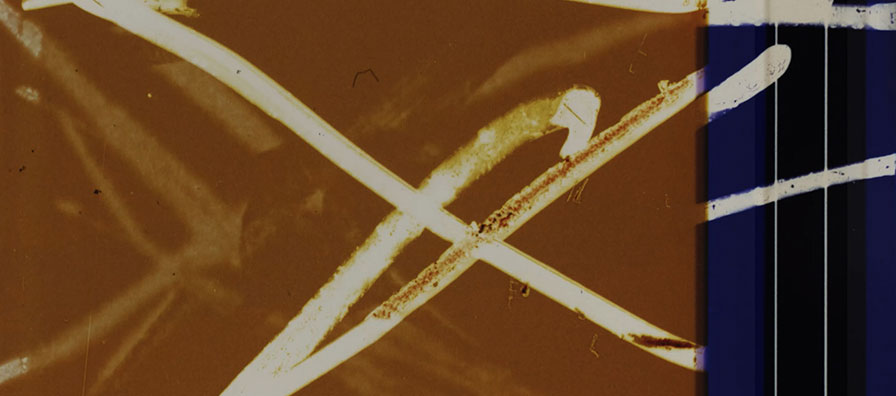
Flipped from the Headlines
Films
- Read More
 ExperimentalNarrative
ExperimentalNarrativeThe Female Offender
Mary Ann Toman16mm, black and white, sound, 32 minRental format: 16mm - Read More
 Experimental
ExperimentalReal Life, Music, Television: A Trilogy
Laura Parnesvideo, color, sound, 15 minRental format: VHS NTSC - Read More
 ExperimentalNarrative
ExperimentalNarrativeThe Taking of Jordan (All American Boy)
Kalil HaddadDigital, color, sound, 7.39 minRental format: Digital file
Description
On Friday, June 21st, 2024, at 7pm, join us at the FMC Screening Room (475 Park Avenue South, 6th Floor) for a riveting and subversive program of experimental true crime films and video art curated by Lucy Talbot Allen!
True crime is a fraught genre, one generally associated more with titillation than with artistic or political rigor. Today, the term tends to evoke the cottage industry of glib murder podcasts and attendant self-styled internet sleuths that has emerged in the last decade. But artists concerned with the gendered, classed, and racial dimensions of structural violence and mediated reality have also engaged with true crime–both the subject matter itself and the terms on which it is navigated in mass media and pop culture. For these artists, like the queer and women filmmakers whose works make up “Flipped From the Headlines,” sensationalized narratives of violence and vice are fertile grounds for reappropriation and critique.
Mary Ann Toman’s The Female Offender scavenges the biographies and memoirs of women criminals from the eighteenth through the early twentieth centuries–among them the Irish-American domestic servant-turned-murderess Bridget Durgan, Canadian suffragist Mary Richardson, and an anonymous sixteen-year-old “girl delinquent” whose autobiography was published in a 1932 issue of Harper’s Magazine. Narrators read from these women’s confessions in overlapping voiceovers devoid of context and specificity, their words collaged with original and found footage. Intertitles quote from the 1898 treatise from which The Female Offender takes its name, a phrenological text that attributes criminality and transgression to congenital physical conditions: a swindler’s left-handedness, a filicidal woman’s “crooked face,” an arsonist’s “many wrinkles.”
Toman’s film evokes Tom Kalin’s Swoon (1992), another exploration of the role of turn-of-the-century physiognomy-obsessed criminology in policing gender and sexuality. Both films look back a century from the postfeminist, tough-on-crime 1990s to a period marked by much of the same turmoil. Like Kalin, David Wojnarowicz was a politically engaged artist and participant in the AIDS activist movement. Wojnarowicz and fellow No Wave filmmaker Tommy Turner’s Where Evil Dwells, a raucous reflection on the infamous murder of Long Island teenager Gary Lauwers by his satanist friend Ricky Kasso, uses the furor inspired by this irruption of violence into suburbia to reveal the subtler brutalities undergirding the American middle class. As a ventriloquist’s dummy identified as “Howdy Doody’s psychotic cousin” tells the audience, Where Evil Dwells “explores the structures of evil in contemporary America.”
The last two works in the program, both short video pieces, don’t address specific spectacularized crimes, instead using found footage and audio to construct nightmarish visual and aural spaces haunted by sexual violence. In the middle segment of the triptych Real Life, Music, Television, “Ladies, There’s a Space You Can’t Go,” Laura Parnes splices together video and audio clips from an episode of Sally Jessy Raphael’s eponymous tabloid talk show in which mothers bemoan their daughters’ risqué fashion choices. The cultural-moral anxieties expressed by outraged audience members–“you look like hookers,” “one day when you get raped…it’s gonna be too late”–echo over degraded analog video and an ominous, thumping drum beat.
The Taking of Jordan also uses audio culled from sensationalized television news coverage of sexualized violent crime, pairing it discomfitingly with porn clips and stills, anonymized images of either kidnapping victims or willing bondage submissives, and a surreal fractured narrative conveyed entirely in subtitles. The video’s subject, Jordan, is really five young men, all queer or gay-for-pay, whose deaths are products of sexual marginalization. Like spirits caught in a mangled cycle of death and rebirth, they are exploited, abused, murdered and killed by the AIDS epidemic, their lives immortalized yet obfuscated in the grainy photographs that flash across the screen. Jordan is a total reduction of the true crime genre to its horrific constituent parts, and a confrontational invitation to parse the parallel drives of eros and thanatos. -Lucy Talbot Allen
***
Program:
- The Female Offender (1994, dir. Mary Ann Toman, 32m)
- Where Evil Dwells (1985, dir. David Wojnarowicz & Tommy Turner, 31m)
- Real Life, Music, Television: A Trilogy (1996, dir. Laura Parnes, 15m)
- The Taking of Jordan (All American Boy) (2022, dir. Kalil Haddad, 7m)
Total Run Time: 85 minutes